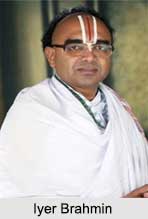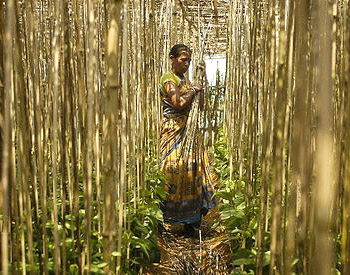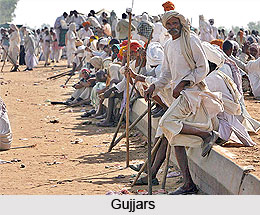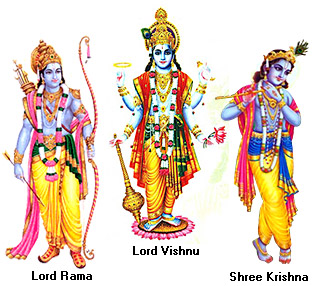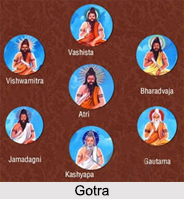There are certain popular and strong beliefs of Gorakhnathis. Not only do the Gorakhnathis recognize and worship the greater and lesser gods of the Hindu Pantheon; but also they follow the popular forms of Hindu belief, having concern for saints and other spirit powers, especially those that are evil; practising magic, exorcism, witchcraft and some primitive medicine giving attention to lucky and unlucky days; and following the superstitions of the populace. Some yogis do not eat fish because Matsyendranath was born a fish; while others do not observe the taboo. According to the religion and superstitions of the followers of Gorakhnaths, an interesting device for detecting good and bad omens has to do with human breathing.
In connection with the sacrifice of the rhinoceros, most Gurkhas otter libations of blood after entering its disembowelled body. Its urine is considered antiseptic, and is hung in a vessel at the principal door as a charm against ghosts, evil spirit and diseases. Many objects are held sacred, or are regarded almost as fetishes, because of their associations, or through the sanctity of the substances from which they are made, or to which they are related.
Ganga River, especially, and other rivers such as the Godavari River are held sacred by them, as by all Hindus. Himalayas, where the Bhagirathi River and the Alaknanda River join to form the Ganges, the former, the swifter stream, is said to be sixteen annas pure. This is an ancient important site. At the Sivaramandap temple the statue of a bronze horse-man, Nakaland (the coming incarnation of Visnu), is worshiped; and at Dhinodhar the mount of Rawa Pir is considered sacred. Some Nathas worship the paduka of Gorakhnath and of Matsyendranath on the Sivratri. Their carans are regularly worshipped. Many animals are held sacred, or are in some way given special attention by Goraknathis. Like all Hindus, they worship the cow. There are special taboos against fish. Of special interest to the yogis are the rhinoceros, the black buck, dogs and snakes.
Yogis celebrate the Nagpanchami festival. Images and pictures of serpents are found about their shrines and monasteries. The Sepalas are snake-charmers. Besides these, there are other Kanphatas who exhibit snakes at melas; and there is a group or tribe, called Kor Mantar, who are Kanphatas, but who live in the jungles and are not often seen, who eat snakes. Furthermore, there is the relation between Shiva and serpents, which lends some significance to the fact that these Yogis trace their line of teachers back to the great god of destruction.
In Varanasi, Lord Shiva is worshipped as Nageswar, Lord of Serpents; and in the United Provinces and in the Himalayas as Rikhesvar, Lord of Serpents. Serpents are associated with Bhairon. Images of and Naga are often found side by side. To the Yogis who haunt the jungles is attributed power over wild beasts. It is believed that Yogis live in the jungles surrounded by tigers and ride on them. The spirits of Yogis are worshipped at the samadhs. The worship of Sivaratri is open to all classes. Kal Bhairon is worshipped as a manifestation of Lord Shiva on the lunar month. Hence, it proves that the beliefs of Gorakhnathis are really strong.










